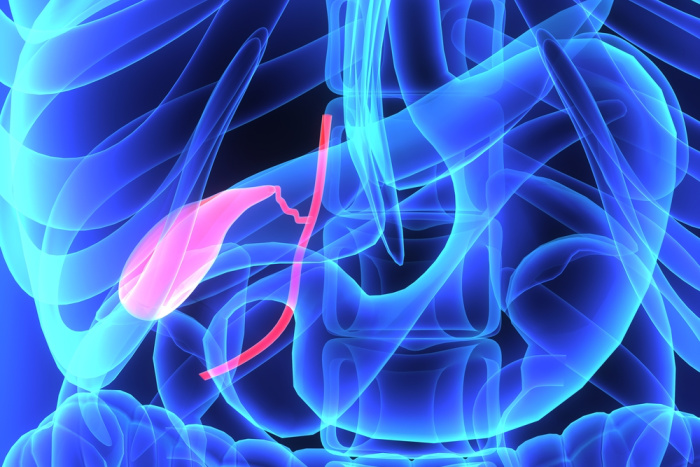Gallbladder removal surgery, also called cholecystectomy, is one of the most common surgical operations in the United States. Each year, 1.2 million people have their gallbladders removed. For many patients, this is their first-ever surgery.
The high rates of gallbladder surgery have driven amazing technological advancements in this specific field. Robotic gallbladder removal helps this operation progress more smoothly than older techniques. Surgeons can now use precise robotic arms and endoscope devices to perform precise, minimally invasive cholecystectomies.
What Is Robotic Gallbladder Removal?
The robots involved in robotic gallbladder surgeries don’t act on their own. Instead, this technology is simply a tool the surgeon uses to perform a delicate operation.
In traditional surgery, the surgeon is situated directly over the patient. When performing a robotic surgery, the surgeon is nearby at a console. The surgeon uses their hands and feet to control the console while a viewscreen shows them advanced three-dimensional images of the inside of the patient’s body.
The console controls robotic “arms” over the patient that carry out the surgeon’s cuts and procedures. Robotic arms allow for more precise incisions than human hands, and specialized sensors give the surgeon a complete view of the patient’s anatomy at the console.
This technology is especially useful in cholecystectomies. The gallbladder is a tiny organ attached to both the liver and the intestines inside the abdominal cavity. Many important organs, arteries, and veins are clustered in this area, making it one of the more difficult parts of the body to operate on. The additional control and imaging capabilities of robotic gallbladder removal make the surgery much easier.
When Is Gallbladder Removal Necessary?
First, it’s important to understand what the gallbladder is and what it does. The gallbladder is a tiny organ on the underside of the liver. As the liver produces bile—a chemical that digests fat—the gallbladder stores it and gradually releases it into the small intestine to break down food.
Cholesterol and other particulates found in bile can gather in the gallbladder, forming gallstones. These hard stones can become wedged in the organ’s bile ducts. If the gallbladder can’t expel bile because of an obstruction, it spasms. This causes intense bursts of pain in the upper right abdomen.
Most people have their gallbladders removed to prevent frequent, painful gallstones. Untreated gallstones frequently cause infections in the gallbladder and pancreas. The stones can also migrate to different areas of the abdomen and lead to dangerous blockages. There are other, rare causes for gallbladder removal, such as cancer, but those surgeries aren’t performed robotically.
How Does Gallbladder Removal Affect a Person’s Life?
Without a gallbladder, bile from the liver flows directly into the small intestine. This may slightly affect the way a person’s body digests fats. Patients may be advised to eat a lower-fat diet prior to or following their gallbladder surgery. Over the long term, most people don’t notice a change in their digestion. Removing a person’s gallbladder does not affect their life expectancy.
Is Robotic Gallbladder Removal Better Than Other Options?
Robotic gallbladder surgery is a modern breakthrough, but there are other surgical options. Each method has pros and cons.
Open Gallbladder Surgery
Before 1991, most cholecystectomies were open surgeries. In an open surgery, the surgeon makes a very large incision so that they can see firsthand everything surrounding the gallbladder. Each person’s anatomy is slightly different, so surgeons must have excellent visibility to ensure they don’t damage nearby arteries and organs.
The large incision used in open surgery requires considerable healing time, causes postoperative pain, and leaves a noticeable scar. For these reasons, most surgeries of this type are now laparoscopic gallbladder removals.
Laparoscopic Gallbladder Surgery
In laparoscopic surgery, the surgeon makes a much smaller incision. Then, they insert small cameras, or laparoscopes, that allow them to view the patient’s anatomy while performing the surgery.
Laparoscopic surgeries have much shorter recovery times and leave less noticeable scars than open surgeries. However, they’re much more difficult to perform than open surgeries because of the limitations of the laparoscopes and the smaller area the surgeon has to work with.
Robotic Gallbladder Removal Surgery
Robotic gallbladder removal is similar to laparoscopic surgery in that it uses very small, one-inch incisions. However, robotic arms make it easier for the surgeon to make precise cuts in a small space, and three-dimensional imaging gives a better view than traditional laparoscopes’ two-dimensional images. Robotic surgery technology has made minimally invasive gallbladder removal significantly easier for both surgeons and patients.
How Long Is Recovery From Robotic Gallbladder Surgery?
Most people can walk, change wound dressings, shower, and leave the hospital on the same day as the surgery. Returning to work is usually possible after one week, and full recovery takes two weeks.
This is similar to the recovery timeframe in manual laparoscopic gallbladder surgery. Open gallbladder surgery typically involves a 3- to 5-day hospital stay and 8 weeks of recovery time.
Does Robotic Gallbladder Removal Leave Scars?
Most robotic gallbladder surgeries leave three one-inch scars on the abdomen. Single-site robotic surgeries leave only one scar near the belly button.
Surgery scars fade significantly with time, even if they seem pronounced at first. After six months to a year, most gallbladder surgery scars are smaller than a quarter and not particularly noticeable. Following a care regimen can help scars fade faster and more completely.
How Painful Is Robotic Gallbladder Surgery?
Cholecystectomies are usually performed under general anesthesia, so patients are unconscious throughout the procedure. Every surgery involves some pain upon waking up from anesthesia, but a small incision causes less pain than a large one.
Nurses administer strong painkillers to ease the majority of postoperative pain. Each person’s individual healing capabilities determine how long pain lasts after surgery. Most people have only minimal pain after one week and are pain-free after the two-week recovery time.
Expert Robotic Gallbladder Removal Surgery in Arizona
Arizona Premier Surgery offers state-of-the-art robotic gallbladder removal performed by experienced surgeons. Our doctors will explain the recovery time and complications of minimally invasive gallbladder surgery and answer any questions you may have. Contact us to learn more.
https://www.ncbi.nlm.nih.gov/pmc/articles/PMC5835599/
https://www.ncbi.nlm.nih.gov/books/NBK448145/
https://health.ucdavis.edu/surgery/news/robotic_gallbladder_surgery.html
https://www.verywellhealth.com/gallbladder-surgery-day-of-surgery-5024887
https://www.jeffersonhealth.org/your-health/living-well/laparoscopic-vs-robotic-surgery-whats-the-difference




